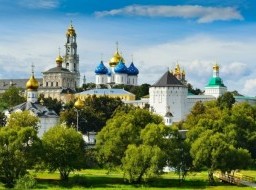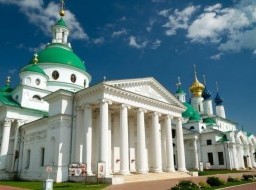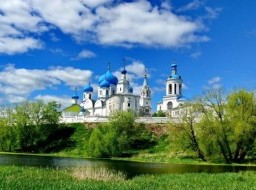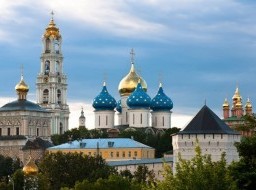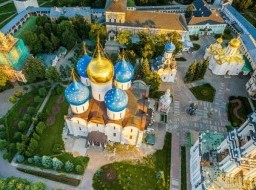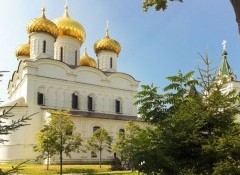Rostov the Great
Known since the 9th century Rostov the Great is one of the oldest city of Russia and one of most interesting stops of the Golden Ring tour. This fascinating town, whose very stones embody the inexhaustible genius of Russian masters, has retained for us a heritage which arouses deep emotions and enriches everyone who appreciates artistic accomplishments of past ages. The exceptional role of this town in the development of Russian culture and its unique architectural ensemble secured for it a place of prominence among the museum cities of European and world significance. Rostov the Great is an ancient town, first mentioned in the ancient chronicles in the year 862. While the official name of the town is Rostov, it is better known to Russians as Rostov Veliky, i. e. Rostov the Great. Rostov always conducted a trade policy, and collected cultural wealth on huge spaces of Northeast Russia. Rostov is located on the shores of Lake Nero in Yaroslavl Oblast. It was capital city of one of the most prominent Russian principalities before joining Moscow in the 15th century and later became a religious center for people arriving from Moscow. In Rostov the first Episcopal faculty, the first Uspenski cathedral (991) was based. Rostov was the constant participant of all political events connected to activity of Grand dukes, Tsar Ivan Grozny, Romanov House. Since 17th century in Rostov began intensive construction of the temples, monasteries, public and residential buildings which are kept up to now. The most significant from them are: Rostov Kremlin, Spaso - Yakovlevsky monastery, Avraamievsky monastery, Varnizky monastery - native land of Sergey Radonegskogo, Christmas monastery and Wooden church of St. John Bogoslova. There are 323 monuments of architecture nowadays in Rostov among which about 100 have federal value, and the ensemble of Rostov Kremlin has world value. There are a significant amount of historical, cultural monuments on the territory of Yaroslavl region (more than 3600), including more than 2700 monuments of architecture. Rostov district (from 17 areas of the region) is one of the richest in Russia by quantity of historical and cultural monuments. Important element of culture of Rostov the Great were crafts. The main of them are: the well-known enamel - the Rostov enamel and black - polished ceramics. The museum of church antiquities was opened on the territory of Rostov Kremlin in 1883 by the public of the town, is also the heritage of Rostov reflecting a life and spiritual predilections of its inhabitants. During the times presence of powerful cultural potential and affinity to capital, involved a plenty of pilgrims to Rostov. Among them there were members of Romanov family, the well-known art workers of Russia (N.Rerih, F.Shaljapin, K.Korovin and many others). Having visited the State museum (Rostov Kremlin - especially valuable monument of Russian people) is possible to know a lot about culture and history of Rostov. The Rostov Kremlin, a pearl of Russian architecture of the 17th century, was built according to a single artistic pattern on the initiative of Metropolitan Jonah Sysoevich, built by Pyotr Dossayev, a brilliant artist. The Dormition Cathedral with its five majestic onion domes is the ensemble's oldest structure (16th century), adjoining it towers the Belfry (1682-1687) with a unique set of bells. Near the Dormition Cathedral spreads out the metropolis itself, built to a single pattern and made up of churches, cathedrals, chambers, dwellings, store-houses, etc. All the structures are encircled with stone walls capped here and there with towers, which make the metropolis resemble a Russian Kremlin. Rostov the Great is one of few towns of Russia, kept as complete town-planning formation with its picturesque architectural and natural landscape. It has served as the reason of that the town was included in a number of Federal programs: "the Golden Ring of Russia ", in the target program "Development and preservation of culture and art of the Russian Federation" and others. It is the applicant for inclusion in the List of the World Heritage of UNESCO. The city is famous for its Maslennitsa festival, festival of ancient culture and fairs. Rostov the Great represents architectural and art value and causes interest for tourists. Having visited Rostov the Great, you receive weight of unforgettable impressions, and by all means want to return and see this city once again. |

